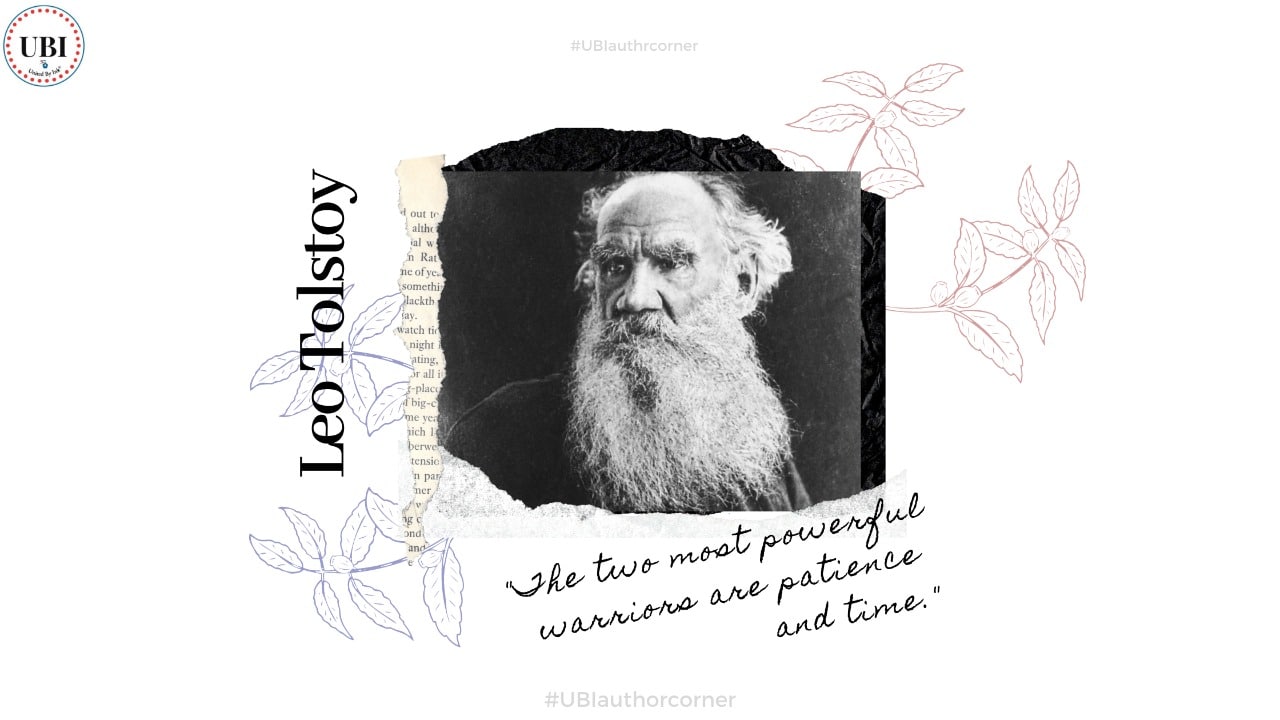
Full name – Lev Nikolayevich Tolstoy
Death – 1910, age 82
Nationality – Russian
“Everyone thinks of changing the world, but no one thinks of changing himself.”
– Leo Tolstoy
To this day, Tolstoy’s novels are considered among the finest achievements of literary work. War and Peace is, in fact, frequently cited as the greatest novel ever written. In contemporary academia, Tolstoy is still widely acknowledged as having possessed a gift for describing characters’ unconscious motives. He is also championed for his finesse in underscoring the role of people’s everyday actions in defining their character and purpose.
Early life –
On September 9, 1828, writer Leo Tolstoy was born at his family’s estate, Yasnaya Polyana, in the Tula Province of Russia. He was the youngest of four boys. Although Tolstoy experienced a lot of loss at an early age with both his parents and first guardian dying, which he would later idealize childhood memories in his writing.
Tolstoy received his primary education at home, at the hands of French and German tutors. In 1843, he enrolled in an Oriental languages program at the University of Kazan. There, Tolstoy failed to excel as a student. His low grades forced him to transfer to an easier law program. Prone to partying in excess, Tolstoy ultimately left the University of Kazan in 1847, without a degree. He returned to his parents’ estate, where he made a go at becoming a farmer. He attempted to lead the serfs, or farmhands, in their work, but he was too often absent on social visits to Tula and Moscow. His stab at becoming the perfect farmer soon proved to be a failure. He did, however, succeed in pouring his energies into keeping a journal — the beginning of a lifelong habit that would inspire much of his fiction.
As Tolstoy was flailing on the farm, his older brother, Nikolay, came to visit while on military leave. Nikolay convinced Tolstoy to join the Army as a junker, south in the Caucasus Mountains, where Nikolay himself was stationed. Following his stint as a junker, Tolstoy transferred to Sevastopol in Ukraine in November 1854, where he fought in the Crimean War through August 1855.
Work –
During quiet periods while Tolstoy was a junker in the Army, he worked on an autobiographical story called Childhood. In it, he wrote of his fondest childhood memories. In 1852, Tolstoy submitted the sketch to The Contemporary, the most popular journal of the time. The story was eagerly accepted and became Tolstoy’s very first published work.
Tolstoy still managed to continue writing while at battle during the Crimean War. During that time, he composed Boyhood (1854), a sequel to Childhood, the second book in what was to become Tolstoy’s autobiographical trilogy. In the midst of the Crimean War, Tolstoy also expressed his views on the striking contradictions of war through a three-part series, Sevastopol Tales. In the second Sevastopol Tales book, Tolstoy experimented with a relatively new writing technique: Part of the story is presented in the form of a soldier’s stream of consciousness.
Once the Crimean War ended and Tolstoy left the Army, he returned to Russia. Back home, the burgeoning author found himself in high demand on the St. Petersburg literary scene. Stubborn and arrogant, Tolstoy refused to ally himself with any particular intellectual school of thought. Declaring himself an anarchist, he made off to Paris in 1857. Once there, he gambled away all of his money and was forced to return home to Russia. He also managed to publish Youth, the third part of his autobiographical trilogy, in 1857.
Back in Russia in 1862, Tolstoy produced the first of a 12 issue-instalment of the journal Yasnaya Polyana, marrying a doctor’s daughter named Sofya Andreyevna Bers that same year.
Tolstoy spent the better part of the 1860s toiling over his first great novel, War and Peace. The novel also uniquely incorporated three long essays satirizing the laws of history. Among the ideas that Tolstoy extols in War and Peace is the belief that the quality and meaning of one’s life is mainly derived from his day-to-day activities. Following the success of War and Peace, in 1873, Tolstoy set to work on the second of his best-known novels, Anna Karenina. Like War and Peace, Anna Karenina fictionalized some biographical events from Tolstoy’s life, as was particularly evident in the romance of the characters Kitty and Levin, whose relationship is said to resemble Tolstoy’s courtship with his own wife.
Religious conversion –
Despite the success of Anna Karenina, following the novel’s completion, Tolstoy suffered a spiritual crisis and grew depressed. Struggling to uncover the meaning of life, Tolstoy first went to the Russian Orthodox Church but did not find the answers he sought there. He came to believe that Christian churches were corrupt and, in lieu of organized religion, developed his own beliefs. He decided to express those beliefs by founding a new publication called The Mediator in 1883.
As a consequence of espousing his unconventional — and therefore controversial — spiritual beliefs, Tolstoy was ousted by the Russian Orthodox Church. He was even watched by the secret police. When Tolstoy’s new beliefs prompted his desire to give away his money, his wife strongly objected. The disagreement put a strain on the couple’s marriage until Tolstoy begrudgingly agreed to a compromise: He conceded to granting his wife the copyrights — and presumably the royalties — to all of his writing predating 1881.
Later fiction –
In addition to his religious tracts, Tolstoy continued to write fiction throughout the 1880s and 1890s. Among his later works’ genres were moral tales and realistic fiction. One of his most successful later works was the novella The Death of Ivan Ilyich, written in 1886.
Tolstoy wrote Father Sergius, a work of fiction in which he seems to criticize the beliefs that he developed following his spiritual conversion. The following year, he wrote his third lengthy novel, Resurrection. While the work received some praise, it hardly matched the success and acclaim of his previous novels. Tolstoy’s other late works include essays on art, a satirical play called The Living Corpse that he wrote in 1890, and a novella called Hadji-Murad (written in 1904), which was discovered and published after his death.
Later years –
Over the last 30 years of his life, Tolstoy established himself as a moral and religious leader. His ideas about nonviolent resistance to evil influenced the likes of social leader Mahatma Gandhi. His troubles with his wife resulted in taking his daughter, Aleksandra, and his physician, Dr. Dushan P. Makovitski, on a pilgrimage. Valuing their privacy, they travelled incognito, hoping to dodge the press, to no avail.
Unfortunately, the pilgrimage proved too arduous for the aging novelist. In November 1910, the stationmaster of a train depot in Astapovo, Russia opened his home to Tolstoy, allowing the ailing writer to rest. Tolstoy died there shortly after, on November 20, 1910. He was buried at the family estate, Yasnaya Polyana, in Tula Province.
How useful was this post?
Click on a star to rate it!
Average rating 1 / 5. Vote count: 2
No votes so far! Be the first to rate this post.

UBI stands for United By Ink®️. UBI is a Global Platform- the real-time social media interactive forum created for Readers, Writers and Facilitators alike.This platform aims to help creative souls realize their writing goals.
Click on our representatives below to chat on WhatsApp or send us an email to ubi.unitedbyink@gmail.com
